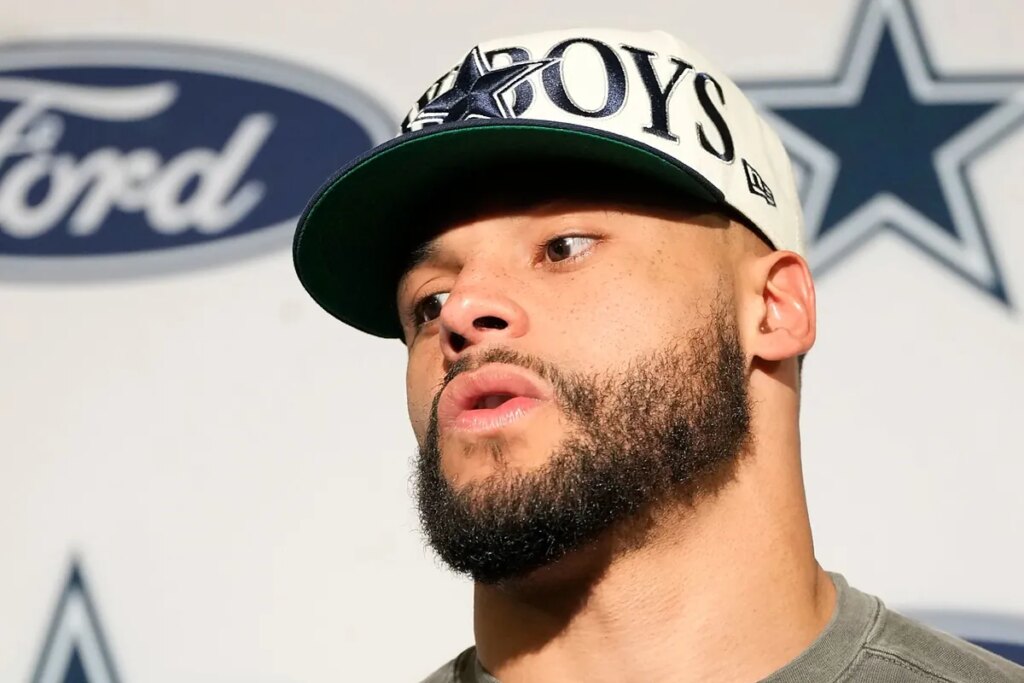The Dallas Cowboys cannot seem to rid themselves from the spotlight at the moment, from Micah Parsons’ contract saga to Dak Prescott’s eye-watering numbers included in his deal.
Former NFL quarterback and current ESPN analyst Dan Orlovsky delivered a pointed critique of the Cowboys, using salary cap figures to highlight a troubling disparity with the NFC East franchise.
Sharing cost figures on X, he contrasted Prescott’s massive $50.5 million cap hit with the combined $46.9 million spent by the Eagles on Jalen Hurts, A.J. Brown, and DeVonta Smith. His headline-grabbing message said it all: “Unserious vs serious.”
Orlovsky’s comparison wasn’t just about money-it called into question the Cowboys’ organizational commitment to championship aspirations, especially given the Atlanta-tinged turbulence overshadowing their 7-10 season and NFC East drubbing by their rival Philadelphia.
Cap figures under the microscope
Prescott is entering the 2025-26 campaign under a four-year, $240 million extension, giving him the largest single-season cap charge of any QB in the NFL.
Even so, Orlovsky contrasted that burden with Philadelphia’s investment in their playmakers and Hurts-arguing that the Eagles have positioned themselves as a more committed and effective contender.
Hurts, on the other hand, plays under a five-year, $255 million deal – but his team-managed contract reduces his cap charge to a modest $21.8 million in 2025.
The Eagles also pay A.J. Brown $17.5 million and DeVonta Smith $7.5 million in cap space-creating a well-balanced salary structure that prioritizes impact players without crippling flexibility.
By underscoring this contrast, Orlovsky painted Dallas as short-sighted: investing highly in one player while being devoid of additional elite talent around him.
Prescott’s recent on-field performance also enters the broader scene. He threw for over 4,500 yards, 36 touchdowns, and nine interceptions last season-yet the Cowboys still finished out of the playoffs.
Critics widely pointed to a lack of surrounding weapons and inconsistent execution in key moments. Orlovsky’s labels of Prescott as overrated reflect the frustrations around single-player-centric strategies.
In contrast, Hurts has a growing reputation for postseason resilience and leadership. His back-to-back playoff runs, capped with MVP honors and his first Super Bowl title, have propelled narratives that position him as the emotionally and tactically anchored leader the Cowboys aspire to be.
Prescott’s point to prove
Offensive-minded analysts also note that the Cowboys’ highly paid QB has not consistently elevated his surrounding cast in big games. Meanwhile, the Eagles’ structured investment in Hurts and elite playmakers is viewed as a model for sustained success-built on cohesive talent and complementary depth.
Orlovsky’s jibe speaks to the broader perception that Dallas prioritizes marquee contracts over sustainable strategies. With owners and front office still debating direction under new coach Brian Schottenheimer, the pressure mounts to align cap strategy and competitive ambition.
Between game planning and roster construction, the Cowboys now face existential scrutiny: can they genuinely contend while layering presumption over proven performance? Orlovsky’s jab-backed by hard financial data and NFL track records-raises broader questions about accountability and realistic expectations.
In the end, Prescott’s cap bomb may look less like star status and more like budget misallocation if Dallas fails to deliver postseason breakthroughs. Investors and fans alike are watching whether the Cowboys can rebalance soon-because, right now, a comparison with Philadelphia suggests they’re the least serious team in the NFC East.
If structural change doesn’t follow, Prescott’s cap number may remain a symbol of style without substance-and Orlovsky’s critique could prove prescient.
Read the full article here

